Equine Biomechanics
A horse’s gait is described as a coordinated pattern of movement that is repeated to form a stride.
The leg goes through three distinct phases during each stride: landing, loading, and break-over. As we learn more about each of these phases, we’ll see how key surface characteristics, such as firmness, cushioning, cupping, responsiveness, and grip can significantly impact the health of a horse’s bones and joints.
Understanding the relationship between a horse’s locomotion and the riding arena surface is vital, especially when deciding which type of footing will be most suitable for you and your horse.
Phase One: Landing
The first phase of a horse’s stride is when the hoof makes initial contact with the ground.
As the hoof lands, it slides forwards and downwards into the surface – absorbing the weight of the horse and rider before coming to a momentary stop.
This halt in the movement causes the bones in the horse’s leg to collide, generating impact shockwaves and vibrations that travel through the ground, hoof and leg.
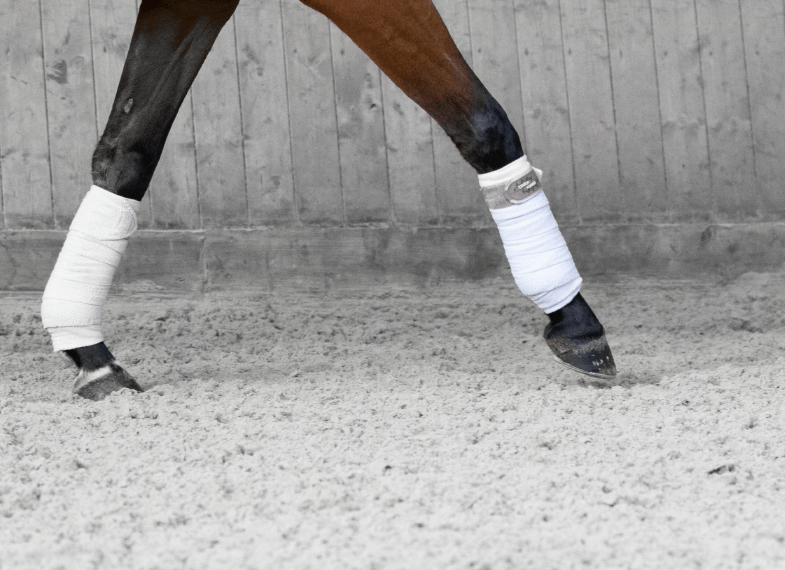
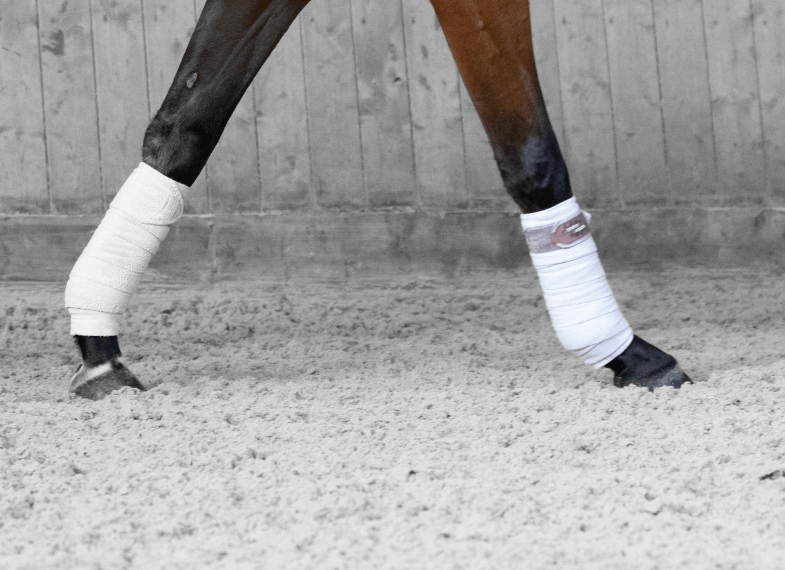
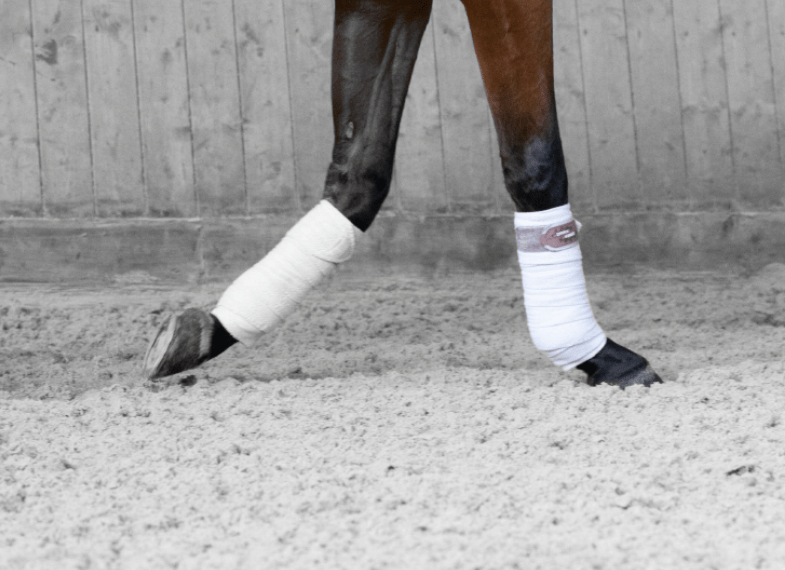
Phase Two: Loading
The loading phase of a stride occurs when the horse’s hoof is in complete contact with the ground.
As the weight of the horse and rider is loaded onto the leg, it generates a significant amount of force, which is subsequently absorbed by the horse’s fetlock joint and tendons. As downward pressure is applied to the hoof, it expands laterally at the heel, and the frog is compressed down against the surface.
This begins a cycle commonly known as the hoof mechanism, which helps to stimulate circulation by pumping venous blood from the hoof capsule, up the leg and back to the body.

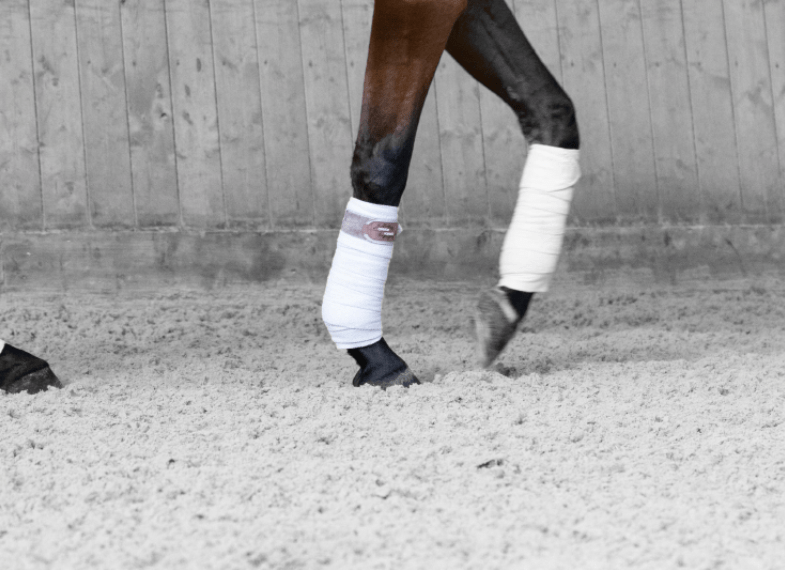
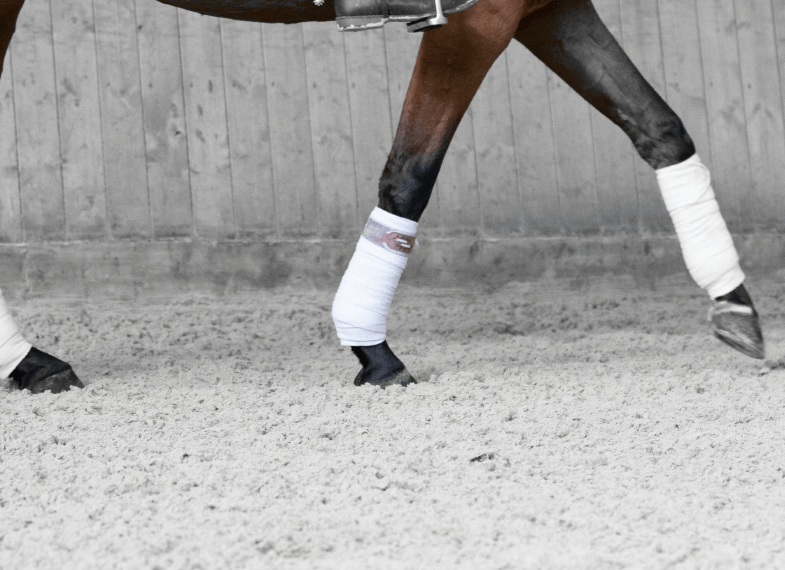
Phase Three: Break-over
The third and final stage of a stride is when the horse’s heel rotates off the ground and rolls over onto the toe.
The hoof contracts back to its original shape as the heel pivots off the surface. Finally, the pressure under the frog is relieved, allowing arterial blood to circulate from the leg into the hoof capsule, which completes the hoof mechanism cycle.
The foot then pushes off from the surface, into a stage of suspension, before beginning the next stride sequence.
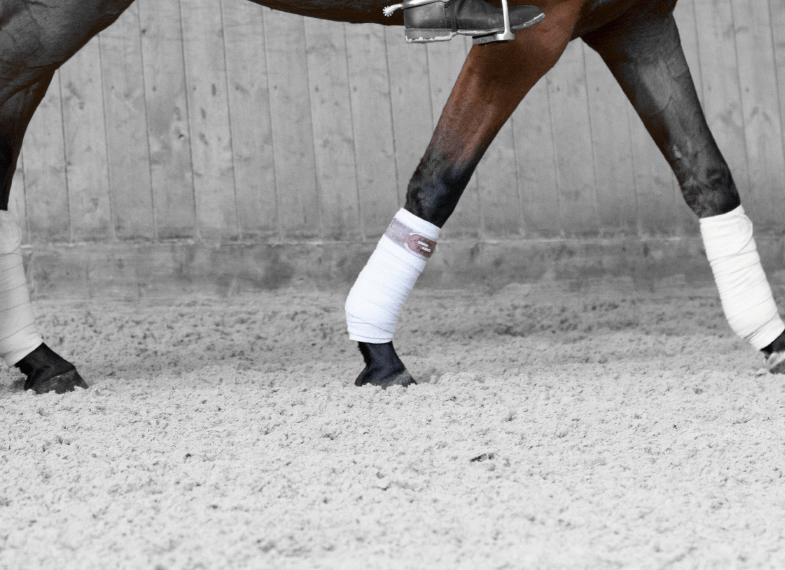
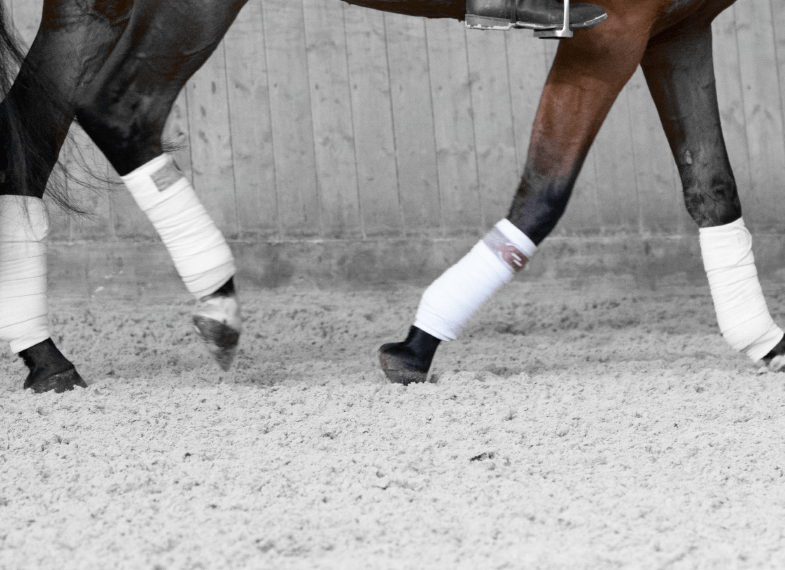
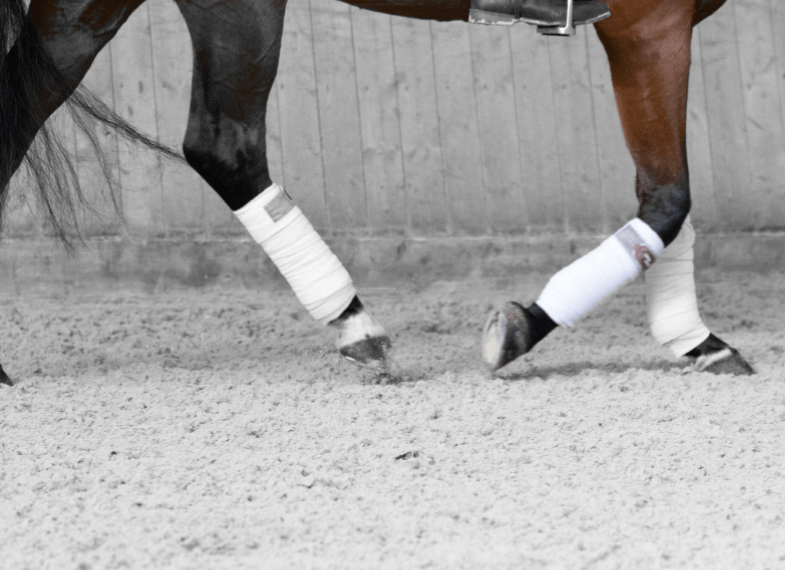
The Role of Arena Surfaces
Now that we understand how the horse moves and interacts with the ground, we can appreciate how important it is to select the right arena footing.
An ideal equestrian surface should allow the horse to transition safely and efficiently, through each stride phase, with no loss of momentum or energy. All riding arena surfaces possess distinct characteristics that help to determine how well the footing will perform when ridden on. These characteristics are: firmness, cushioning, cupping, responsiveness and grip.
Characteristic One: Firmness
The firmness or hardness of a riding arena surface will affect how much support is given to the horse upon landing and determine how well impact shock forces are dispersed throughout the footing.
Compacted or firm surfaces provide the horse with a high level of support but cannot dampen impact forces sufficiently. Instead, these shockwaves are absorbed by the horse’s bones and joints, increasing the risk of concussion-related injuries.
Surfaces that are too soft or loose absorb shock forces well but lack support. This type of footing can cause the horse to work harder, wasting significant energy, negatively impacting respiration and increasing the risk of tendon and ligament-related injuries, such as over-extension.
Ideally, your chosen riding surface should be firm enough to offer the horse a high level of support but soft enough to minimise concussion by absorbing impact shock forces well.
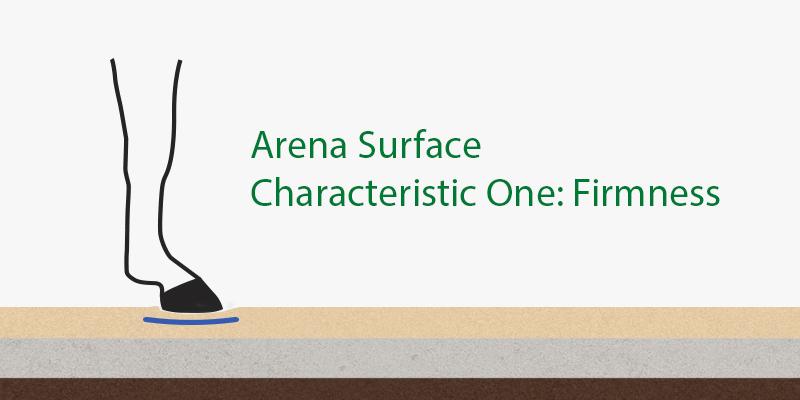
Characteristic Two: Cushioning
Cushioning is the characteristic that determines how well shock forces are absorbed by the surface during the loading phase of a stride.
A hard surface lacks cushioning and cannot provide the horse with adequate shock absorption, which helps relieve stress when weight is loaded onto the leg.
A soft or deep arena surface has too much cushion, making the footing unstable. In addition, the surface shifts under the hoof, and the horse is forced to work harder for balance and support, often leading to inflammation of the leg’s soft tissues and other injuries.
A surface with a good amount of cushioning will distribute shock forces effectively, support the sole of the hoof and provide the horse with enough resistance to balance and transition smoothly into the break-over phase.

Characteristic Three: Cupping
Cupping is an important characteristic that determines how well the sole of the hoof is supported and directly influences the hoof mechanism.
Firm or overly compacted surfaces will prevent the horse’s foot from penetrating down into the surface. As a result, the sole of the hoof has minimal contact with the ground, and the hoof mechanism, which is most effective when the frog is wholly compressed against the surface, is hindered.
A soft arena surface will mould or cup around the hoof but does not provide enough pressure under the foot, to maximise the hoof mechanism. If the hoof mechanism is hindered, the amount of blood flowing through the foot will be reduced, damaging the hoof capsule and leading to diseases such as Laminitis or Navicular Syndrome.
Therefore, your riding arena surface should be soft enough to cup around the sole and collateral grooves of the foot but firm enough to achieve the hoof mechanism.

Characteristic Four: Responsiveness
This characteristic affects how well energy is returned to the horse as the surface rebounds back to its original form.
An excessively hard or firm surface will return energy too quickly, creating additional shock vibrations. These vibrations are typically absorbed by the horse’s bones and joints.
Surfaces that ride deep will rebound energy too slowly, forcing the horse to use its own power to push out of the surface, increasing the strain on muscles and the respiratory system.
An ideal surface, which is active and springy, should return energy back to the horse at the same rate that it was applied, reducing the horse’s need to use its own energy for momentum, preventing injuries, strain and fatigue.

Characteristic Five: Grip
Grip is a critical characteristic determined by the overall tightness of the arena surface.
An overly compacted or tight surface will give the horse too much grip, which stops the hoof suddenly instead of allowing it to slide forward and downwards into the surface. As a result, the horse’s range of motion is restricted, and the risk of concussion to the bones and joints increases. A tight footing will also increase strain on the horse’s leg during break-over, as the toe cannot rotate down into the surface.
In comparison, a loose surface doesn’t have enough grip and allows the hoof to slide more than it should, causing the horse to strain or over-extend vital tendons and ligaments. This type of footing will also offer reduced grip during break-over; instead of pushing off the surface, the hoof sinks into it, decreasing propulsion into the next stride.
A surface with the proper grip should allow the hoof to slide slightly on landing without over-extending the leg. The surface should also provide enough stability during break-over for the horse to push off into the next stride with no loss of momentum or energy.
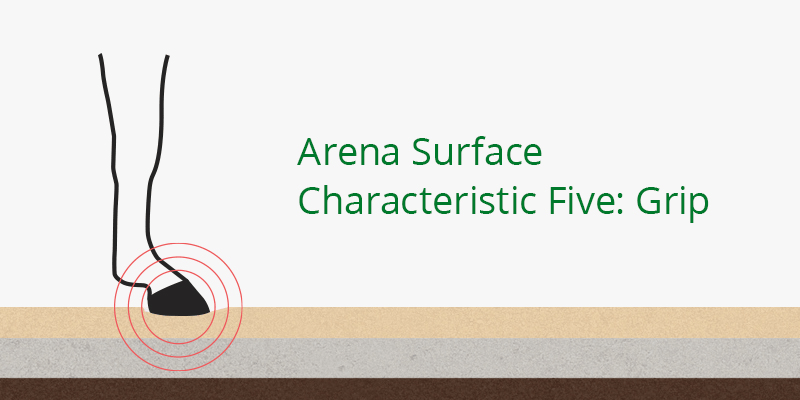
Conclusion
A horse’s stride is a complex series of movements with three distinct phases: landing, loading and break-over.
The horse’s stride is influenced by how the hoof interacts with the footing. All equestrian surfaces possess five essential characteristics: firmness, cushioning, cupping, responsiveness and grip. If not correctly balanced, these characteristics can affect the horse’s overall performance and cause severe bone, tendon, and ligament injuries.
An ideal riding surface should provide enough firmness to support the horse during all three stride phases whilst also being soft enough to absorb and disperse impact shock. The surface should also ‘cup’ the hoof correctly on loading, actively returning energy to the horse and providing enough grip to prevent slips and falls.
Contact Us
If you’re unsure which type of footing is most suitable for you and your horse, our experienced team is here to help. Simply give us a call on 0800 044 810 or complete our contact form, and a member of the team will be in touch.
